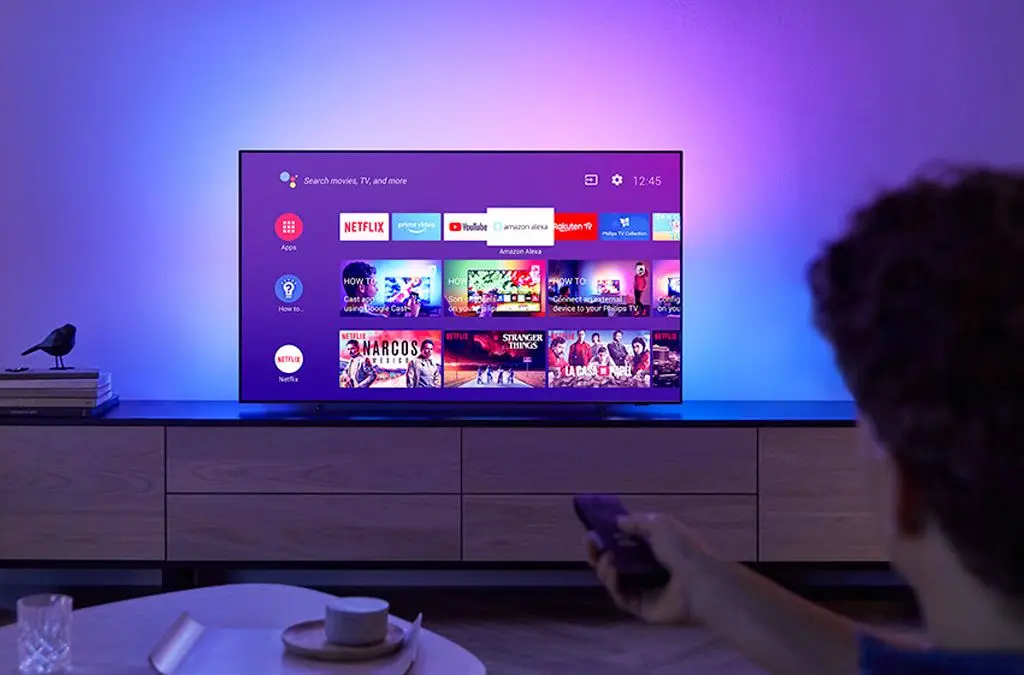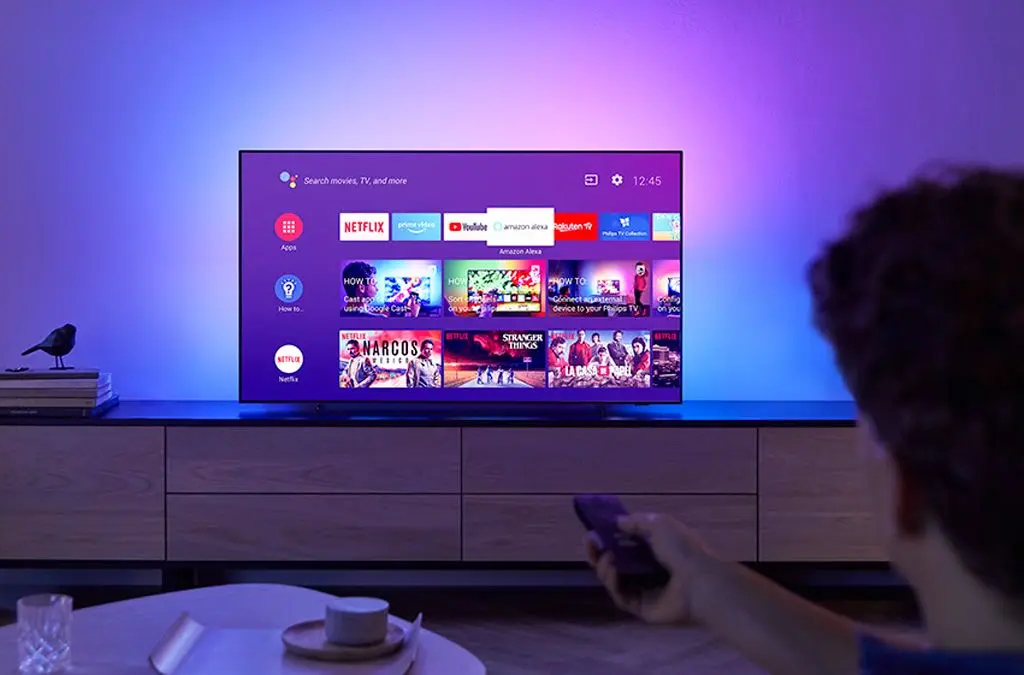Alright, entertainment aficionados and comfort connoisseurs! Ever dreamt of a living room that responds to your every whim, where movies start with a whisper and music fills the air at your command? Well, buckle up, because we’re diving deep into the dazzling world of automating home entertainment. It’s all about blending the best smart TV tech with killer audio setups to create an immersive experience that’s as seamless as it is sensational. Think of it as turning your living room into your very own personalized cinema and concert hall – without the sticky floors!
We’re living in a golden age of entertainment, with more content available than ever before. But let’s be honest, juggling remotes, fiddling with settings, and trying to get everything to play nicely together can sometimes feel like a chore. That’s where the magic of home entertainment automation steps in, promising a smoother, more enjoyable, and frankly, cooler way to kick back and relax.

The Cornerstones of Automated Entertainment: Smart TV and Audio
At the heart of any automated home entertainment system lie two key players: the best smart TV you can get your hands on and a meticulously chosen audio setup. These aren’t just standalone devices; when integrated intelligently, they become the foundation of a truly immersive and automated experience.
Smart TVs: More Than Just a Screen
Today’s smart televisions are light-years away from the bulky boxes of yesteryear. They’re essentially powerful computers with stunning displays, built-in Wi-Fi, and the ability to run a plethora of apps, from streaming giants like Netflix and Amazon Prime Video to music services like Spotify and Apple Music. They often come equipped with voice assistants, allowing for hands-free control, and can integrate seamlessly with other smart home devices.1 Think of your smart TV as the command center for your visual entertainment universe.
Audio Setups: Bringing Sound to Life
A fantastic picture deserves equally fantastic sound. Whether it’s a sleek soundbar, a powerful surround sound system, or a set of high-fidelity smart speakers, your audio setup is crucial for creating an immersive experience. Automated audio can adjust volume based on the content, sync with your TV for a seamless experience, and even play music throughout your home with a simple voice command.2 It’s like having a symphony orchestra at your beck and call.
Why Automate Your Entertainment? The Sweet Perks
So, why go through the effort of automating your home entertainment? Trust me, the rewards are well worth it:
Seamless Control and Convenience
Imagine settling onto your couch and saying, “Hey [Voice Assistant], play the latest episode of that show.” And just like that, your TV turns on, the correct app launches, and the episode begins, with the lights dimming automatically. That’s the beauty of automation – effortless control at your fingertips (or rather, your voice!).
Immersive and Personalized Experiences
Automation allows you to tailor your entertainment experience to your exact preferences. Want the lights to dim to a specific level when a movie starts? Crave the audio to be louder during action scenes and quieter during dialogue? Automation makes it happen.
Enhanced Aesthetics and Reduced Clutter
By integrating your devices and controlling them centrally, you can minimize the number of visible wires and remotes, leading to a cleaner and more aesthetically pleasing living space. It’s like magic, but it’s just clever tech!
Integration with the Broader Smart Home Ecosystem
Your automated entertainment system can be part of a larger smart home ecosystem, interacting with other devices like smart lighting, thermostats, and even security systems to create a truly integrated living experience.3 Imagine your lights slowly brightening after a movie ends, or your thermostat adjusting when you start a gaming session.
Key Features to Look for in Smart TVs for Automation
When choosing a smart TV for your automated setup, keep these features in mind:
Voice Assistant Integration: Your Hands-Free Commander
Compatibility with popular voice assistants like Amazon Alexa, Google Assistant, or Apple Siri is crucial for hands-free control. Look for TVs with built-in voice assistants or seamless integration with external devices.
Smart Home Platform Compatibility: Playing Well with Others
Ensure your smart TV works well with your chosen smart home platform (e.g., Amazon Alexa, Google Home, Apple HomeKit). This allows for unified control of all your connected devices.
HDMI CEC (Consumer Electronics Control): Remote Harmony
HDMI CEC allows devices connected via HDMI to communicate with each other, enabling you to control multiple devices with a single remote for basic functions like power and volume.
IP Control: Advanced Network Integration
IP control allows your smart TV to be controlled over your network, enabling more advanced automation possibilities through third-party control systems.
App Ecosystem: Your Gateway to Content
A wide range of supported streaming apps and services is essential for accessing your favorite content directly on your TV.
High-Quality Display: Picture Perfect Entertainment
While not directly related to automation, a high-resolution display with good color accuracy and HDR (High Dynamic Range) support will significantly enhance your viewing experience. Look for features like OLED TVs or advanced LED TVs with local dimming.
Crafting the Perfect Automated Audio Setup
Your audio setup is just as important as your TV. Here’s what to consider for seamless automation:
Smart Speakers with Voice Control: Audio on Demand
Smart speakers like the Amazon Echo, Google Nest, or Apple HomePod can be integrated into your audio setup for voice-controlled music playback and even control of other entertainment devices.
Soundbars with Smart Features: Sleek and Smart Sound
Many modern soundbars come with built-in voice assistants and Wi-Fi connectivity, allowing them to integrate into your smart home ecosystem and offer features like voice control and music streaming.
AV Receivers with Network Capabilities: The Heart of a Multi-Channel System
For more complex surround sound systems, an AV receiver with network connectivity and support for whole-home audio protocols is key for seamless automation and multi-room audio.
Wireless Multi-Room Audio Systems: Sound Throughout Your Home
Systems like Sonos, Bose, or Yamaha MusicCast allow you to stream music to multiple speakers throughout your house, all controlled through a single app or voice commands.
Integration with Smart Home Platforms: Unified Audio Control
Ensure your audio devices are compatible with your chosen smart home platform for unified control and automation possibilities.

Putting It All Together: Creating Automated Entertainment Scenes
The real magic happens when you start creating automated scenes that control multiple devices simultaneously. Here are a few examples:
Movie Night Mode
With a simple voice command or a tap on your phone, your “Movie Night” scene could:
- Turn on your smart TV and switch to your preferred streaming service.
- Dim your smart lights to a cozy level.
- Adjust your soundbar or surround sound system to the optimal movie settings.
- Even close your smart blinds or curtains.
Music Time
Saying “Play some relaxing music” could trigger a scene that:
- Starts playing your favorite playlist on your smart speakers or soundbar.
- Adjusts the lighting to a calming ambiance.
- Displays album art on your smart TV in a subtle way.
Gaming Session
Initiating your “Gaming Session” scene could:
- Turn on your gaming console and switch your TV to the correct input.
- Adjust the lighting to a more focused setting.
- Activate your gaming headset and adjust the audio output.
DIY vs. Off-the-Shelf: Choosing Your Automation Path
You have two main paths when it comes to automating your home entertainment:
DIY Solutions: The Tinkerer’s Paradise
For the tech-savvy and adventurous, DIY solutions using platforms like Raspberry Pi or dedicated home automation hubs (like Home Assistant) offer immense flexibility and customization. You can integrate a wide range of devices and create highly personalized automation routines.8 However, this path requires more technical knowledge and setup effort.
Off-the-Shelf Smart Devices and Systems: Plug and Play Simplicity
A growing number of smart TVs, soundbars, and speakers come with built-in automation features and compatibility with popular smart home platforms. This offers a more user-friendly and often easier setup process, but might have less flexibility for highly customized automation.
Tips for a Smooth Entertainment Automation Journey
Here are a few tips to ensure a seamless and enjoyable automation experience:
- Plan Your Setup: Before buying any devices, think about your needs and how you want your entertainment system to function.
- Ensure Network Stability: A reliable Wi-Fi network is crucial for the smooth operation of your smart devices.9
- Start Simple: Begin with a few key automations and gradually expand your system.
- Keep Software Updated: Regularly update the firmware and software of your smart devices for optimal performance and security.
- Explore Integration Options: Take the time to learn about the integration capabilities of your devices and your chosen smart home platform.
The Future of Automated Entertainment: What’s Next?
The world of automated home entertainment is constantly evolving. Expect to see even more seamless integration between devices, more sophisticated AI-powered personalization, and perhaps even holographic displays and immersive spatial audio experiences in the years to come. The future of kicking back and enjoying your favorite content looks incredibly bright (and sounds amazing!).
The Curtain Closes: Your Automated Entertainment Awaits
Automating your home entertainment system is about more than just convenience; it’s about creating a more immersive, personalized, and enjoyable way to experience the content you love. By choosing the right smart TV and audio setups, and by leveraging the power of automation, you can transform your living room into the ultimate entertainment oasis. So, dim the lights, cue the sound, and let the automated magic begin!
Frequently Asked Questions (FAQs)
- Will automating my home entertainment system make it more complicated to use for guests? Not necessarily. Well-designed automation should be intuitive. You can often set up simple voice commands or dedicated buttons for common functions that guests can easily use.10 You can also retain traditional remote controls as a backup.
- Are there any security risks associated with having my TV and audio system connected to the internet for automation? As with any internet-connected device, there are potential security risks. It’s crucial to keep your devices’ firmware updated, use strong passwords for your Wi-Fi network, and be mindful of the privacy settings on your smart devices.
- Can I integrate older, non-smart TVs or audio equipment into an automated system? Yes, you can often integrate older devices using intermediary smart devices like smart plugs with power monitoring, IR (infrared) blasters controlled via Wi-Fi, or by connecting them through a smart AV receiver.
- What happens if my internet connection goes down? Will my automated entertainment system stop working? Many automation features that rely on cloud services or internet connectivity (like streaming or voice control) will be affected if your internet goes down.11 However, some basic functions and direct device-to-device communication might still work depending on your setup.
- Is it expensive to fully automate a home entertainment system with high-quality smart TVs and audio equipment? The cost can vary significantly depending on the brands, features, and complexity of the system you choose. While high-end setups can be pricey, there are also many affordable smart TVs and audio devices available that can be integrated into a basic automated system. You can also build your system gradually over time.


